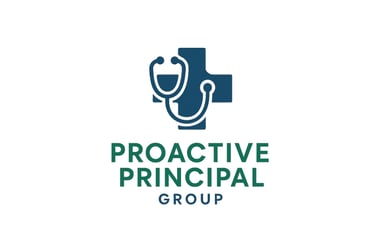BIG NEWS: Founder, Christina Essex, will be discussing AI in HEALTHCARE at the GA State Bar Health Law Section's Advanced Health Law CLE on October 8th at the Cobb Energy Performing Arts Centre.
Understanding Incident-to-Billing: Guidelines and Best Practices for Physicians
9/10/20252 min read


What is Incident-to-Billing?
Incident-to-billing is a policy that allows healthcare providers, such as physicians, to bill for services provided by non-physician practitioners (NPP). This billing method is particularly relevant in cases where the patient has been seen by a physician for an initial visit, and subsequent care is provided by a nurse practitioner (NP) or physician assistant (PA). To qualify for this billing method, the services must be provided under the direct supervision of the supervising physician.
The Importance of Understanding Direct Supervision
Direct supervision is critical when it comes to incident-to-billing. Medicare, for example, requires the supervising physician to be present in the office suite to promptly address any issues or questions that may arise during the provision of care. However, simply being in the office is not enough. Specific requirements for evidence or documentation of direct supervision varies by payor. Some providers choose to have the supervising physician co-sign the notes as a best practice. While CMS does not strictly require a co-signature, this practice does provide a clear and defensible defense in case of an audit. Lack of proper documentation can lead to claim denials, fraud investigations, and financial penalties. Understanding and abiding by the nuances of direct supervision can prevent a range of potential issues.
Payer Variability and Medicaid Considerations
While most payors follow the guidelines set forth by CMS Medicare regarding incident-to-billing, it is important to note that this is not universally applicable. For example, Georgia Medicaid does not permit the use of incident-to-billing. In some states, the Medicaid program may be operated by a Managed Care Organization (MCOs) like Centene, CareSource, and Amerigroup. These MCOs have their own reimbursement policies and provider manuals. Therefore, it is crucial for healthcare providers to thoroughly understand the billing guidelines of each payor they work with. This ensures compliance with payor-specific regulations and helps avoid costly repercussions.
5 Essential Tips for Physicians
Here are five tips physicians should keep in mind to maintain compliance with incident-to-billing regulations:
Consult with Billing Coordinators: Engage your billing coordinator, practice administrator, or third-party billing vendor to gain intimate knowledge of each payor's rules and regulations.
Document Supervision Clearly: Ensure accurate and thorough documentation of direct supervision for all services billed under the incident-to policy.
Stay Informed on Payor Changes: Regularly review and stay updated on any modifications to billing policies or procedures from various payers. Always review the provider manual at each renewal period for any changes.
Conduct Internal Audits: Implement routine internal audits to identify any discrepancies in billing practices before they escalate to audits by payors.
Educate Staff: Train your staff on the importance of compliance with incident-to-billing guidelines to ensure everyone understands the responsibilities involved. Creating a best practices policy is recommended.
By following these best practices and ensuring thorough understanding of the incident-to-billing policy, physicians can prevent potential audits and costly demands for overpayments or worse. Ultimately, it is imperative to prioritize compliance to maintain the financial health of your practice.
© 2025. All rights reserved. | Proactive Principal Group, LLC | Disclaimer | Privacy Policy | Terms of Service


info@ppgconsultants.com
Monday - Thursday: 9am - 5pm
Friday: 9am - 3pm
Mailing Address: 1445 Woodmont Ln, NW # 715, Atlanta, GA 30318
Proactive. Strategic. Empowered.
Your physician's advocate and navigator. We help you move with clarity. Let us protect your license and livelihood.
678-203-8704
Contact Us
